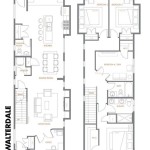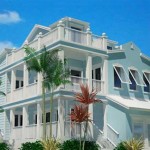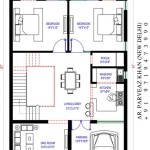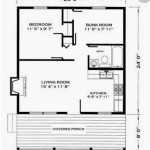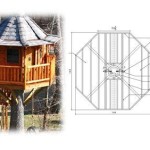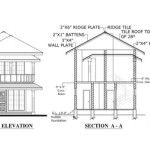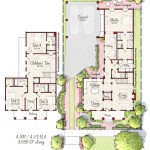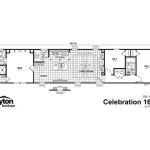New Orleans Creole Cottage House Plans
Creole cottages represent a significant architectural style deeply rooted in the history of New Orleans. Characterized by their distinct features and adaptability to the local climate, these homes continue to be a sought-after design choice. Understanding the key elements of Creole cottage house plans offers valuable insight into their enduring appeal and practical functionality.
One of the defining characteristics of the Creole cottage is its single-story design. This feature is directly related to the high water table prevalent in New Orleans. Building a raised foundation was often impractical, leading to the development of ground-level construction. While some Creole cottages feature a half-story attic space, the primary living areas remain confined to the ground floor.
The rectangular footprint is another hallmark of the Creole cottage. This simple shape contributes to the efficient use of space and materials. Typically, the long side of the rectangle faces the street, maximizing the home's presence on narrow lots common in the historic neighborhoods of New Orleans. These elongated lots, a legacy of French and Spanish land division practices, influenced the cottage's characteristic deep, narrow layout.
A full-width front porch is an integral component of the Creole cottage design. This covered outdoor space serves as a critical buffer against the heat and humidity, providing a shaded area for relaxation and socializing. The porch's central role in the Creole lifestyle reflects the importance of outdoor living in the region.
Large windows and doors are incorporated into Creole cottage plans to facilitate natural ventilation and light. Given the warm climate, maximizing airflow is crucial for comfort. These openings, often featuring operable shutters, allow residents to regulate indoor temperatures and enjoy the natural breezes. The positioning of windows and doors is strategically planned to capture prevailing winds and minimize direct sun exposure.
The side-gabled roof is a defining characteristic of Creole cottage architecture. This simple roof form is efficient to construct and effectively sheds rainwater. The steep pitch helps to further mitigate the effects of the hot sun and heavy rainfall common in the New Orleans climate. The side gables are frequently adorned with decorative brackets or gingerbread trim, reflecting the influence of Caribbean architectural styles.
Construction materials commonly used in Creole cottages include brick, stucco, and wood. Brick and stucco offer durability and fire resistance, important considerations in a densely populated urban environment. Wood framing and siding are utilized for their affordability and ease of construction. The choice of materials often reflects the socioeconomic status of the original homeowners and the availability of resources.
Interior layouts of Creole cottages typically feature a central hall plan. This arrangement facilitates cross-ventilation and provides access to rooms on either side. The front rooms often serve as parlors or living areas, while the rear rooms are designated for dining and kitchen functions. This layout reflects a traditional separation of public and private spaces within the home.
Over time, variations in Creole cottage designs emerged, reflecting the evolving needs and preferences of homeowners. Double Creole cottages, for instance, feature two units sharing a common wall, while camelback cottages incorporate a partial second story at the rear of the house. These adaptations demonstrate the flexibility of the Creole cottage design and its capacity to accommodate different lifestyles and family sizes.
Modern interpretations of Creole cottage house plans often incorporate contemporary features while preserving the essence of the traditional style. Updated kitchens and bathrooms, open floor plans, and energy-efficient construction techniques can be seamlessly integrated into the classic Creole cottage framework. This adaptability ensures that the Creole cottage remains a relevant and appealing housing option in the 21st century.
Choosing a Creole cottage house plan necessitates careful consideration of factors specific to the New Orleans environment. Elevation, flood zones, and hurricane preparedness are critical aspects to address during the planning process. Consulting with local architects and builders experienced in designing and constructing Creole cottages is essential to ensure the home's resilience and suitability to the local conditions.
The enduring popularity of Creole cottages in New Orleans is a testament to their practicality, charm, and cultural significance. Their simple yet elegant design, adaptability to the climate, and connection to the city's history make them a valuable part of the architectural landscape. Understanding the key features and variations of Creole cottage house plans enables prospective homeowners to appreciate the rich tradition and enduring appeal of this unique architectural style.

Edg Plan 3042 Creole Cottage Farmhouse Southern Living 3 042 Sq Ft House 5 Beds Baths Elite Design Group

Creole Cottage Mountain Home Plans From House

Creole Cottage Coastal House Plans From Home

A Typical Creole Cottage Of New Orleans Ca 1830 Nona 006 077 Scientific Diagram

Creole Cottage Home In Ridge South Estates House Plans Floor

Standard Ground Floor Plan For A Creole Cottage Note How Each Room Has Scientific Diagram

Vieux Carré A Creole Neighborhood In New Orleans Teaching With Historic Places U S National Park Service

Traditional House Designs
.jpg?strip=all)
Architectural Styles Creole Cottage Hancock County Historical Society

New Orleans Architecture Fine Homebuilding

